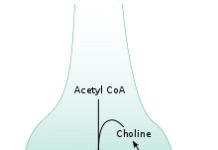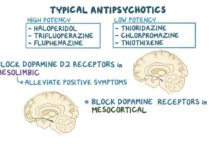Signs and Symptoms of Hypophosphatasia
Symptoms of childhood cases vary but may include:
- Short stature with bowed legs or knock knees
- Decreased mobility
- Skeletal malformations
- Bone and joint pain
- Enlarged wrist or ankle joints
- Abnormal skull shape
- Losing baby teeth earlier than usual
- Softening of the bones
- Frequent fractures of the foot and thigh bones
- Premature loss of teeth
- Joint pain and inflammation
Odontohypophosphatasia is characterized by the premature loss of baby teeth in childhood, or premature loss of teeth in adulthood. With this form of HPP, there are no symptoms that affect or involve the bones.
Causes and Risk Factors of Hypophosphatasia
How Is Hypophosphatasia Diagnosed?
Ultrasounds during pregnancy may also show short and bowed long bones.


What to Eat and What to Avoid for Osteoporosis Prevention
Prognosis of Hypophosphatasia
Treatment and Medication Options for Hypophosphatasia
Strensiq is used to treat perinatal, infantile, and juvenile onset HPP.
Other treatments target specific symptoms and complications.
These treatments include:
- Nonsteroidal anti-inflammatory drugs (NSAIDs) to treat bone and joint pain
- Vitamin B6 to help to control seizures in severely affected infants
- Regular dental care beginning early on
- Physical and occupational therapy
Surgery may also be recommended. Adults suffering from repeated fractures may undergo a procedure called rodding, in which an orthopedic surgeon places a metal rod through the center opening of a bone to make it stronger and more stable.
Children may be given orthotic braces to encourage stability, and in-sole orthotics may be used by both adults and children.
Related: What to Eat — and Avoid — for Strong Bones if You Have Ankylosing Spondylitis
Prevention of Hypophosphatasia
Hypophosphatasia cannot be prevented, but treatments such as the ones outlined above are available to help manage the symptoms.
Research and Statistics: Who Has Hypophosphatasia?
Resources We Love
The MAGIC Foundation
This charitable nonprofit organization was created to provide support for the families of children afflicted with conditions and diseases that affect a child's growth, including hypophosphatasia. The organization can help parents of newly diagnosed children connect with other parents whose children are living with the disease.
Soft Bones
Soft Bones exists to provide information and support to people living with hypophosphatasia (HPP) and their caregivers. The nonprofit’s Resource Library is a go-to source for recent news articles, helpful fact sheets, podcasts, and webinars. Their online community form, HPP and Me, can connect you with other patients, families, and caregivers.
With additional reporting by Carlene Bauer.
Editorial Sources and Fact-Checking
References
- Högler W, Langman C, Gomes da Silva H, et al. Diagnostic Delay Is Common Among Patients With Hypophosphatasia: Initial Findings From a Longitudinal, Prospective, Global Registry. BMC Musculoskeletal Disorders. 2019.
- Schini M, Eastell R. Establishing Race-, Gender- and Age-Specific Reference Intervals for Pyridoxal 5′-Phosphate in the NHANES Population to Better Identify Adult Hypophosphatasia. Bone. December 2020.
- Kaur J, Nourabadi S, Chavez L, Sachmechi I. A Concise Review on Hypophosphatasia With Case Report. International Journal of Medicine. 2016.
- Campomelic Dysplasia. MedlinePlus. June 1, 2014.
- Achondrogenesis. Genetic and Rare Diseases Information Center.
- Rare Disease Database: Hypophosphatasia. National Organization for Rare Disorders (NORD). 2017.
- Medical Professionals: Endocrinology: Hypophosphatasia. Mayo Clinic. October 23, 2014.
- Hypophoshatasia. Genetic and Rare Diseases Information Center (GARD). February 1, 2016.
- Hypophosphatasia. MedlinePlus. August 18, 2020.
- Chorionic Villus Sampling. Mayo Clinic. November 12, 2020.
- Offiah AM, Vockley J, Munns CF, Murotsuki J. Differential Diagnosis of Perinatal Hypophosphatasia: Radiologic Perspectives. Pediatric Radiology. January 2019.
- Conti F, Ciullini L, Pugliese G. Hypophosphatasia: Clinical Manifestation and Burden of Disease in Adult Patients. Clinical Cases In Mineral and Bone Metabolism. May-August 2017.
- Choida V, Bubbear JS. Update on the Management of Hypophosphatasia. Therapeutic Advances in Musculoskeletal Disease. August 1, 2019.
- Shapiro JR, Lewiecki EM. Hypophosphatasia in Adults: Clinical Assessment and Treatment Considerations. Journal of Bone and Mineral Research. July 2017.
Sources
- ALPL Gene. MedlinePlus. August 18, 2020.
- Vogt M, Girschick H, Schweitzer T, et al. Pediatric Hypophosphatasia: Lessons Learned From a Retrospective Single-Center Chart Review of 50 Children. Orphanet Journal of Rare Diseases. August 2020.













































